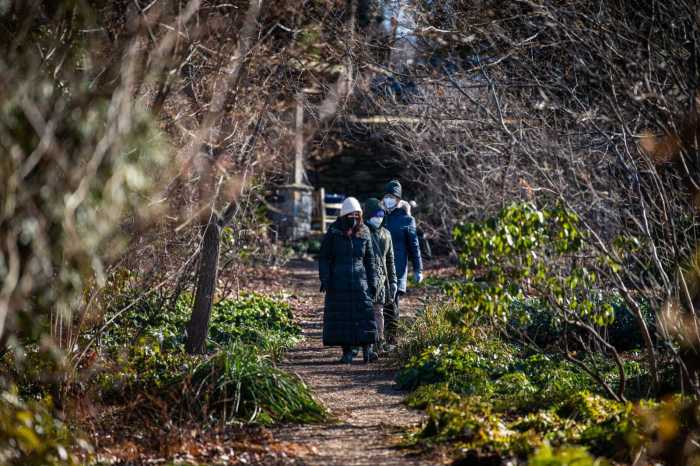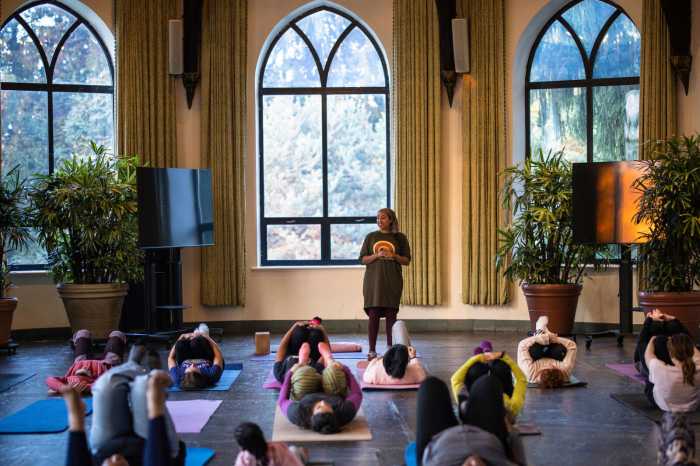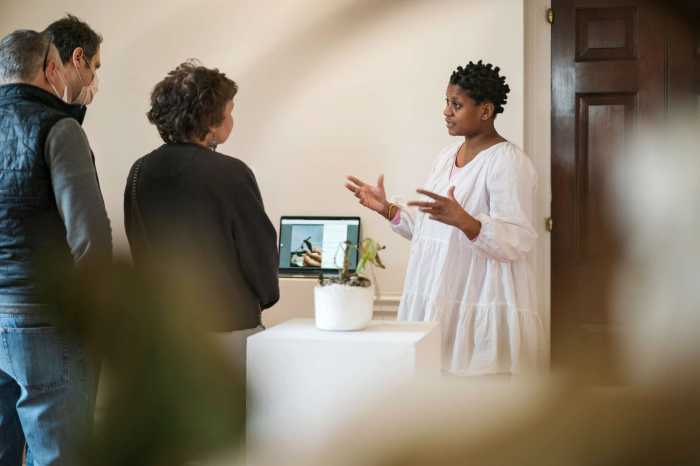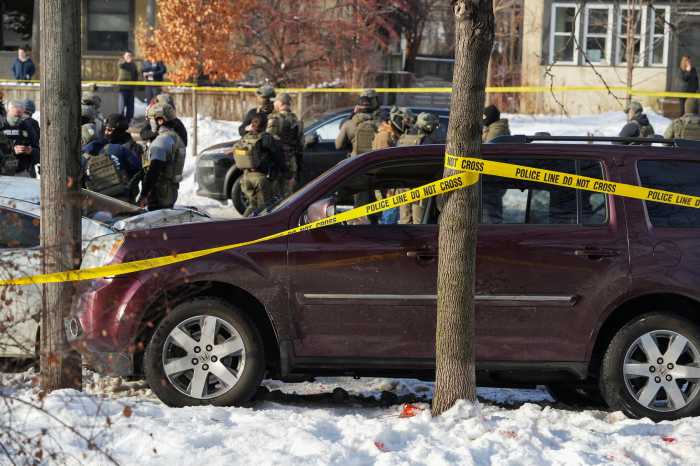South Bronx residents stopped by a resource fair at St. Mary’s Park Wednesday to pick up not only backpacks and school supplies, but also grab snacks, fentanyl test strips, Naloxone kits and access healthcare services through about a dozen community organizations.
The resource fair comes ahead of International Overdose Awareness Day on Aug. 31. But many in the neighborhood need no reminder— St. Mary’s Park is just blocks away from The Hub— which has seen emergency services respond to as many as 20 overdoses a week, according to a report from the U.S. Representative for the District, Ritchie Torres.
Instead, community organizations and city agencies focused less on outlining the problem and more on offering resources to prevent overdose deaths. Executive Deputy Commissioner for the NYC Department of Health and Mental Hygiene (DOHMH) Dr. Jean Wright told the Bronx Times that the event was about humanizing healthcare for people who use drugs.
“ What we hope to bring to the community is information and education,” Wright said. “But I think more importantly than that— it’s just to show the compassion that we have from the Health Department— that we really do care about the challenges that folks are experiencing in the community.”
Community organizations set up tables along the Northwest corner of St. Mary’s Park, offering health and mental wellness services, giveaways, games, and prizes. Longtime nonprofits serving the South Bronx, such as St. Ann’s Corner for Harm Reduction (SACHR), La Casa de Salud (The Health House), Bronx Opioid Collective, and BOOM! Health, gave away harm reduction tools, wound care supplies, and sexual safety supplies.

But the resource fair went beyond free stuff. The Bronx Opioid Collective offered table visitors free mental health evaluations, and gave immediate appointments to people in need.
A chance for healing
The Bronx wellness nonprofit, BOOM! Health, offered visitors on-site holistic services like acupressure and a type of sound healing calling, fork tuning, which uses vibrations and resonance to target different centers of stress, trauma or pain in the body and promote healing.
The South Bronx also had an opportunity on Wednesday to remember those who have died from overdoses. BOOM! Health prompted people to write notes on little paper T Shirts to people they knew who died and then pin them to a “clothesline.” The notes completed sentences like, “If I had one more day with you, I would say…” or “You taught me…” to encourage thoughtful remembrances of loved ones.
Hector, a man who lives in the neighborhood, said that although he doesn’t use drugs, he’s seen a big problem in the neighborhood. He told the Bronx Times that “there’s potential” for events like the resource fair to help the community address the high rates of drug use in the area.
He said that he decided to come by the fair when he saw the crowd.
“I was working and I saw a lot of stuff going on and said, ‘let me go to the park,’” Hector said.
He left the fair with a sandwich, a new backpack and some “good information.”
Representatives from Health Department said that Naloxone kits and training were especially popular, noting that about half the people who stopped by to pick one up had already been trained in how to use the life-saving drug which can reverse an opioid overdose. The other half stayed for a quick training session, which was also offered in Spanish, covering the signs of an opioid overdose and how to use the nasal spray to reverse an overdose.
Drugs like Naloxone address the heart of what DOHMH Deputy Commissioner Dr. Wright told the Bronx Times is the city’s most important goal in helping New Yorkers who use drugs.
“ The main crux is first and foremost, saving lives,” Wright said. “Then above and beyond that is making sure people have access [to services] and understand how they can access [services].”
Wednesday’s resource fair supported a larger effort to confront high rates of substance use in the South Bronx. In response to frequent overdoses, unsanitary conditions, and safety concerns in the nearby Hub, the city ramped up its presence in the area, blocking off and clearing out Roberto Clemente Plaza, where people frequently congregated to use drugs.
City Hall and DHMH told the Bronx Times that the sanitation efforts are coupled with a surge in services to the area, conducting more frequent outreach efforts and launching new recovery programs.
Still, longtime service providers in the community told the Bronx Times that the city’s approach could be improved by more collaboration with organizations that have already developed relationships with those who need access to harm reduction and treatment services for drug use.

Melissa Nieves, the Director of Outreach and Integration for La Casa de Salud (The Health House), said that the organization has been serving the community in the Hub and the Bronx for eight years. She told the Bronx Times that improving communication and collaboration can improve care.
“There’s too many people talking and none of it is together,” Nieves said. “It’s not going to help if we continue to work in silos.”
Despite ongoing challenges, the turnout at St. Mary’s Park reflected a neighborhood seeking safety and solutions. In the South Bronx, community organizers hope that raising awareness will not only prevent more deaths but also shift the conversation toward community-centered care.
























